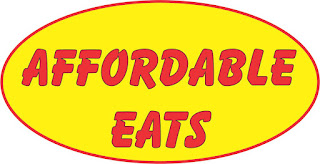My home is on Vancouver Island, off the southwest coast of Canada. It's an expensive place to live and I'm on a fixed income, in a time of rapidly increasing inflation. I could choose to move somewhere with a lower cost of living but I've lived here almost all my life. My friends and family are here and I don't want to be further away from them.
That leaves me with two choices: I can either cut a discretionary expense like internet or my car out of my budget and put the money saved toward buying food, or I can accept that my range of food choices is declining and figure out how to make the best of what I do have access to. I've chosen the second.
Meat is incredibly expensive here right now so it's making fewer and fewer appearances on my plate and I'm okay with that. I'm an adept enough cook and know enough about basic nutrition to ensure that I get sufficient protein in my diet from other sources. I still include eggs and cheese in my diet but I also rely on nuts, seeds, whole grains, and legumes. Especially legumes.
If you look to other cultures that rely heavily on plants for the proteins in their diet, you'll soon see that beans, lentils, and peas play an important part in their cuisines. They're inexpensive, have an extraordinarily long shelf life, and - when well prepared - they taste good too. Dried legumes are often consumed in whole form, re-hydrated and cooked until tender, but they're also often ground into pastes or flours and added to dishes in these forms.
Chickpea flour is a cooking staple in India, and also found in Mediterranean and African cuisines. As the vegan lifestyle grows in popularity chickpea flour is seen more often in North American cooking too. It's versatile and rich in nutrients. One cup of chickpea flour contains 20 grams of protein, 6 grams of fat, 10 grams of fiber, 30% of the recommended daily intake of thiamine, 101% of the recommended daily intake of folate, and 25% of the recommended daily intake of iron.
There are 2 commonly available forms of chickpea flour in the stores here: white chickpea flour/gram flour and besan flour, which is made from brown chickpeas and more finely ground. Both are similar in nutritional value. There are differences in the way they're cooked though. Vegan Richa wrote an excellent post about the differences between chickpea flour and besan. It's worth clicking through to read it.
When you're cooking with chickpea flour, don't taste the raw batter. It'll taste awful and leave an unpleasant aftertaste too. When cooked, the flavour mellows into something slightly nutty and toasty; very pleasant.
I use chickpea flour in several ways:
- I sub it for half of the wheat flour in conventional baking powder or baking soda leavened recipes for pancakes, biscuits, cookies, etc. (You'll probably have to adjust the amount of liquid you add.)
- I use it in Indian recipes, as instructed by the recipe writer.
- I use it to make something akin to polenta, which I cool, then cut into pieces and use in a variety of applications. It can be used as a substitute in recipes that call for paneer or tofu, it can be cut into wedges or fries and baked, fried plain, or battered/breaded and then deep fried.
- I make it into a thin batter - sometimes leavened and sometimes not - and cook it as I would crêpe batter, for use in place of tortillas.
There are a host of chickpea flour recipes on Pinterest. Pop on over there, take a look, and then give some of them a try. I'm sure you'll find something you like and, in doing so, you'll add variety and nutritional value to your menus while stretching your food dollars further.

